On September 26, an X-ray imaging spectroscopic satellite, called 'XRISM,' was launched from the Tanegashima Space Center (TNSC) of the Japan Aerospace Exploration Agency (JAXA), riding onboard the 'H-IIA' rocket, to capture information on the hot and energetic phenomena of the universe. XRISM is a replacement of the satellite 'Hitomi (ASTRO-H),' which was lost owing to an operational error in 2016. XRISM has been developed as part of a joint project with the United States of America, in cooperation with Europe and other countries. By assessing the composition and movement of 'plasma,' which is a high-temperature gas traveling through space, XRISM aims to clarify the formation mechanism of 'galaxy clusters', consisting of 100 or more galaxies, and the origins of various elements.
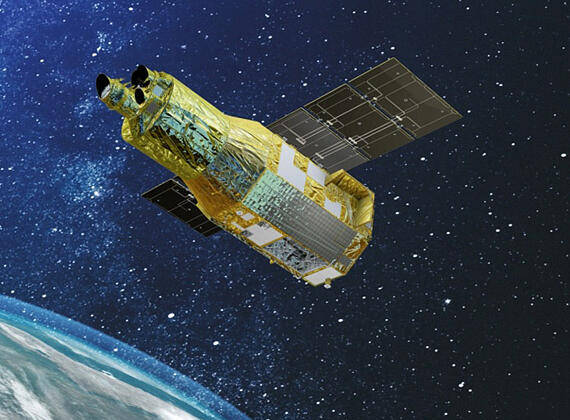
Provided by JAXA
Playing a role in the broader development of physics
Since ancient times, humans have gazed at stars with unaided eyes. However, the early 17th century witnessed the first visualization of celestial objects using telescopes, and since then, astronomical observations in the visible light spectrum have been ongoing. Since the 20th century, various electromagnetic waves belonging to bands other than the visible light band, including radio waves, X-rays, gamma rays and infrared rays, have been employed to observe celestial objects and diverse phenomena in the universe by leveraging the characteristics of each band of electromagnetic waves.
X-rays are electromagnetic waves with wavelengths ranging from approximately 0.01 to 1 nanometer (a nanometer is one billionth of a meter), which is shorter than the wavelength range of visible light. With such wavelengths, X-rays are suitable for detecting hot and energetic celestial objects, as well as high-energy phenomena, such as galaxy clusters, which are ultra-dense neutron stars that are remnants of massive explosions, and black holes, which are dense enough to even trap light. Given that X-rays are blocked by the Earth's atmosphere, launching satellites into space is necessary for their observations. The XRISM team states, "As a general-purpose X-ray observatory open to the world, XRISM will promote research in various fields of astrophysics and play a role in the broader development of physics in the 2020s."
The total length of the XRISM spacecraft is approximately 8 meters, expanding to approximately 9 meters in width with the full deployment of its solar panel. The weight of the spacecraft including fuel is approximately 2.3 tons. This observation instrument consists of two X-ray-collecting telescopes developed by the United States of America, each equipped with different types of sensors. The sensor section consists of a domestically produced wide-field X-ray imager and a spectrometer that is jointly developed by Japan, the United States of America and Europe to accurately measure X-ray energies. These instruments are intended to be used for the high-precision analysis of elements contained in plasma, as well as for the analysis of plasma movements. The performance of these observation instruments is on par with that of the lost ASTRO-H.
The field of view of the aforementioned imager is 38 arcmin squared, which is larger than the size of the full moon. While this field of view may seem smaller compared to the field of view of everyday cameras currently in use, within the realm of X-ray astronomy satellites, it stands as one of the largest in history, second only to the field of view offered by ASTRO-H.
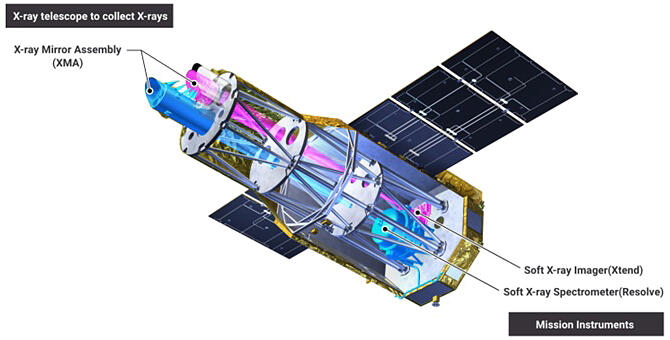
Provided by JAXA
At a press conference in July, Project Manager Hironori Maejima of the XRISM project, stated, "We have been attempting to reliably resume the mission to the level achieved during the operation of ASTRO-H. XRISM is equipped with extremely complex onboard instruments. If its performance mirrors that observed during ground testing, we anticipate extremely good results. With this, our ultimate objective is to accomplish flawless operation."
XRISM was launched during the morning of September 7. It rode onboard onboard the H-IIA launch vehicle No. 47 (H-IIA F47), along with lunar lander, the 'Smart Lander for Investigating the Moon (SLIM).' During its operation, the spacecraft will maintain a circular orbit at an altitude of approximately 550 kilometers for approximately 96 minutes. The designed lifespan of the device is three years, which is contingent upon the availability of liquid helium for spectrometer cooling. However, the researchers claim that the use of refrigeration equipment will allow continuous operations even after the three years. Japan's financial commitment to this project, including the launch expenses estimated at approximately 10 billion yen, amounts to approximately 27.7 billion yen. XRISM stands for an 'x-ray imaging and spectroscopy mission.'
Formation of galaxy clusters, the origin of elements and a variety of other topics
XRISM has the potential to investigate a broad spectrum of topics, spanning events of varying scales, from the formation of galaxy clusters to the processes underlying the creation of various chemical elements.
Galaxy clusters are the largest celestial bodies in the universe, measuring tens of millions of light years in diameters. The seemingly empty regions within these clusters are filled with high-temperature plasma that is only detectable using X-rays. Evidence also suggests the presence of some unidentified dark matter in such regions of galaxy clusters, and this matter accounts for most of the cluster masses. Ideally, plasma is supposed to cool down while emitting X-rays, and it is hypothesized that a galaxy cluster eventually collapses under its own gravity as the density at its center increases. However, contrary to these expectations, some galaxy clusters have been observed to remain stable over a period of 10 billion years. The research team aims to solve this apparent contradiction by accurately examining the plasma temperature and elemental movements using XRISM.
The universe was created 13.8 billion years ago through a massive explosion known as the Big Bang. Immediately following this event, the temperature rapidly dropped from an extremely high temperature, initiating reactions among protons and neutrons. In a matter of minutes, this process led to the formation of nuclei of lighter elements, including deuterium, tritium, helium and even trace amounts of lithium. By contrast, relatively heavier elements such as oxygen, nitrogen, silicon and metals seem to have been created much later in stars and their final forms, including 'supernova explosions.' The researchers aim to use XRISM to examine the remnants of supernova explosions to determine the ratios of elements and the manner of their dispersion. With this, they aim to try to understand the synthesis processes of elements, as well as the stars and supernova explosions producing them.
Mission Principal Investigator Makoto S. Tashiro of XRISM stated at the press conference, "Elements heavier than iron are thought to be created from intense energy phenomena such as supernova explosions. However, we are yet to clearly comprehend these phenomena. Although this is not something that can be addressed through only a few observations, we hope to make significant contributions to our current understanding of these phenomena."
The researchers also aim to precisely measure the gas energy just before it falls into a black hole, investigate the structure of spacetime and estimate the magnitudes of black hole rotations. They will attempt to understand the mechanism by which high-speed gas, called a jet, is ejected from a black hole, which is ideally supposed to trap light.
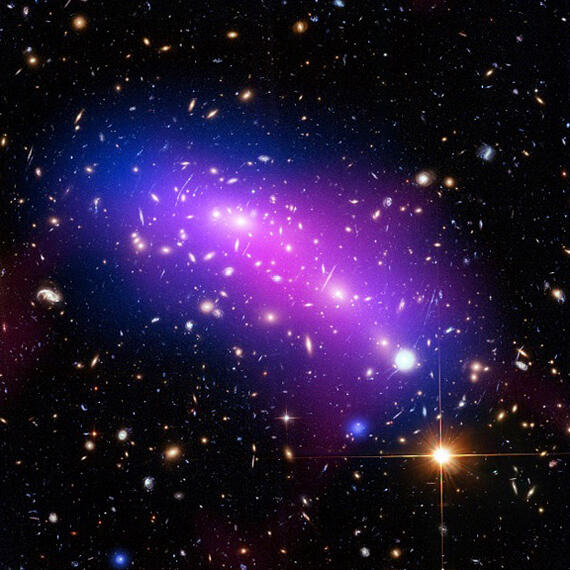
Provided by NASA, the National Radio Astronomy Observatory, and others
Learning lessons from the unfortunate Hitomi mishap, numerous measures have been undertaken to prevent its recurrence
Since the launch of Hakucho (swan in Japanese) in 1979, Japan has launched as many as six X-ray astronomy satellites, setting a focus in this field. Hitomi (ASTRO-H) was launched in February 2016; however, over a month later, an irreversible mistake occurred during its initial operation. First, sensors that monitored the attitude of the spacecraft stopped working; this caused the spacecraft to erroneously assume that it was rotating when in fact it was not. With this, the spacecraft began rotating in the opposite direction to stop itself from rotating. The attitude control engine was fired to protect the spacecraft; however, in doing so, the operator committed a mistake in manually inputting the instruction information from the ground, and negative instead of absolute values were transmitted, in turn accelerating the rotation.
Owing to a combination of these negative factors, the structure of ASTRO-H could no longer withstand the high-speed rotation and ultimately disintegrated. The solar cell panels and other components are believed to have detached from their joints. Owing to these erroneous operations, the ASTRO-H satellite, which had just been launched, was lost. A report issued by JAXA at the time explained that "the development of instruments and observations were prioritized, whereas preparations for the safe operation of the satellite were paid little attention."
XRISM is a replacement satellite developed to prevent the recurrence of ASTRO-H failures. XRISM is the seventh X-ray astronomy satellite.
The main measures undertaken to prevent the recurrence of this failure are as follows: (1) a function to terminate the rotation of the spacecraft during abnormal firing of the attitude control engine, (2) an automatic monitoring system for the early detection of abnormalities in the data of the spacecraft, (3) a mechanism to autonomously switch to the safety mode if the attitude changes beyond the prescribed value, (4) a mechanism to monitor the generated power and autonomously switch to the safety mode if the power falls below the prescribed threshold value, and (5) a function to stop following instructions if the spacecraft receives erroneous directions from the ground outside the valid range. These countermeasures are expected to address all problems that occurred with ASTRO-H.
The production of XRISM also progressed through a different development structure. For ASTRO-H, the U.S. National Aeronautics and Space Administration (NASA) was initially supposed to provide the onboard equipment; however, the plan was changed later to a joint supply from Japan and the United States of America. For ASTRO-H, the project manager responsible for planning was a scientist with expertise in high-energy astrophysics. By contrast, for XRISM, Maejima, with expertise in systems engineering, served as the project manager, and Tashiro served as the mission principal investigator. In addition, a person in charge of technical development was appointed on an equal footing with the mission principal investigator. Maejima stated, "We actively fostered a constructive clash of opinions between science and engineering and created a system that was not biased toward science to achieve safe operation."
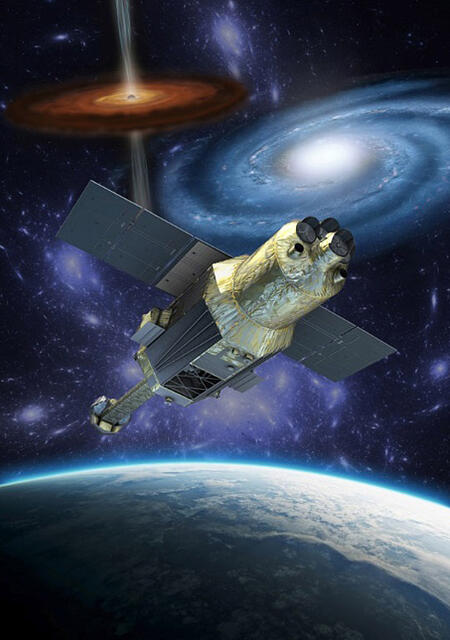
Provided by JAXA
Passionate thoughts and the desire to accomplish the mission!
Furthermore, with the loss of ASTRO-H, JAXA initially called the satellite that would later be labeled as XRISM a 'replacement spacecraft.' However, it was eventually labeled as a 'successor.' At the press conference, Maejima answered a question about this situation, stating the following: "At first, we called it a replacement spacecraft, but in the early stages of development, we consulted with NASA, and they suggested that calling it a replacement spacecraft would be regressive, so let us give it a new name; thus, we named it XRISM. This is how we came up with the name XRISM."
Personally, I deeply sympathize with such forward-looking thoughts. However, given that the development of XRISM was necessary owing to the loss of ASTRO-H, which was still in its initial operation period, and given that the performance of its observation instruments was found to be equivalent to that of ASTRO-H, I feel that it would be more appropriate to call it a replacement spacecraft, with a strong desire to 'accomplish the mission this time.' I am not implying that any one of these views is correct, but I would like to know your thoughts.
Europe, with the aid of Japan and the United States of America, is aiming to develop an ultra-large X-ray space telescope called 'Athena' by the late 2030s. XRISM will be the pilot for Athena. Thus, XRISM will observe nearby clusters of galaxies and convey the results to Athena, which will detect galaxy clusters at much greater distances. It will be interesting to witness the manner in which this passionate objective of capturing the hot universe would translate into significant scientific breakthroughs.
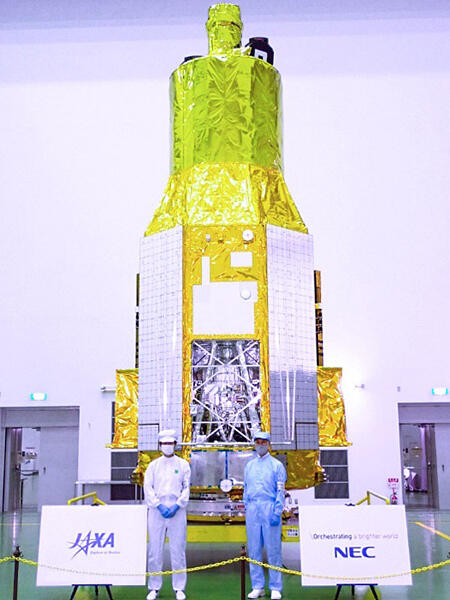
Provided by JAXA
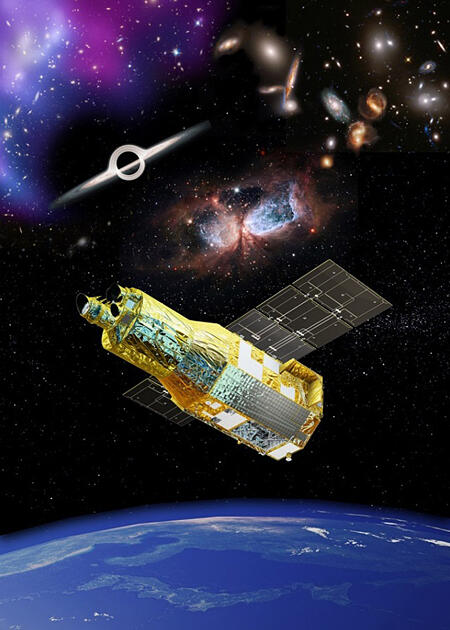
Provided by JAXA
(KUSAKA Takeo / Science Portal Editorial Office)
Original article was provided by the Science Portal and has been translated by Science Japan.




